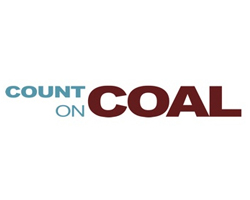
 






.gif)



|
Signature Sponsor


September 20, 2017 - While Washington’s “war on coal” has ended – with this administration’s decision makers taking a fuel-neutral approach to regulation – the New York Times editorial board is nostalgic for the days of politicians picking winners and losers in the energy market.
In what has now become weekly anti-coal tirades, the Times picks up where the prior administration’s regulators left off, building a campaign against coal. Of note: requests to publish a response or correct the record are consistently declined. The Times knows best what its readers should hear and think, thank you very much.
This week, with wistful remembrance, the Times recalls the various regulations that this administration has wisely seen fit to challenge. Given the outlet’s historic denial that regulation has played a part in the industry’s decline – even while it cites the devastating job losses in the industry under the Obama administration – it is no surprise that they ignore the insurmountable problems with the regulations that have been repealed, suspended or replaced. A regulation in which the federal government seeks to usurp authority designated to the states? Brilliant. Rulemaking that assigns authority to the Office of Surface Mining that is already held by EPA and the U.S. Army Corps of Engineers creating jurisdictional confusion? Not a problem.
Yesterday’s regulator, it seems, could do no wrong. Unless, of course, he removes himself from the role of market-meddler.
Contrary to the Times’ suggestion that the administration is “try(ing) to twist the clock back to the day when coal was essentially a monopoly fuel,” the industry just wants to compete on a level playing field. And for the first time in many years, coal is doing just that.
Even as the Times promises its readers a steady decline in coal’s share of power generation, the U.S. Energy Information Administration last month predicted that coal generation will exceed natural gas this year as well as next. Coal production is up 13.5 percent through mid-September, and coal exports were up 62 percent through July. This is what happens when coal is allowed to compete, even in the face of considerable subsidies that continue to prop up renewables.
Seems like a pretty compelling story. Unless, of course, you’re the New York Times. |
 











|